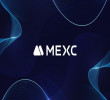7 November 2025
Unveiling the Essence of Bitcoin: Understanding Its Form and Function
Bitcoin has emerged as a transformative force. As a decentralized digital currency, Bitcoin challenges the traditional notions of money, replacing tangible coins and banknotes with cryptographic algorithms and decentralized ledgers. But what exactly does a Bitcoin look like in this virtual landscape? This article delves into the essence of Bitcoin, elucidating its form, function, and significance.
Bybit offer: Deposit $50, and GET 10 USDT (withdrawable)!
Bitcoin: A Conceptual Currency
Bitcoin isn't your everyday money – it's more like a thrilling digital quest! Unlike those familiar bills and coins you can touch and feel, Bitcoin is a different beast altogether. Picture it as a hidden code, a sort of digital puzzle that thrives in the vast online realm. We fondly refer to it as a cryptocurrency, a kind of money that seems almost magical. Each Bitcoin is like a precious digital jewel, a unique piece of code that you can acquire, swap, and use to buy all sorts of things. It's akin to having your personal, secret treasure chest – a digital piggy bank accessible only through your trusty computer. While you can't hold it in your hand, the world of Bitcoin is an enchanting adventure into the future of currency.
Also read: Exploring The Pros And Cons Of Bitcoin
The Anatomy of a Bitcoin
Bitcoin has three vital parts: the blockchain, private keys, and transactions. The blockchain is like a big, open book that records every single Bitcoin move ever. Private keys are your secret codes, your key to the treasure chest; they've got to be guarded like gold. When you send or get Bitcoins, it's like passing the digital torch from one secret key to another. The cool part? Miners, these tech-savvy superheroes, check and approve these transactions by solving tricky math puzzles and adding them to the blockchain. So, basically, a Bitcoin is a cyber-coin with a secret handshake, running on a trusty system where safety and transparency rule.
The Visual Representation of Bitcoin
While Bitcoin primarily exists as digital data, various visual representations help individuals understand and interact with it.
1. Bitcoin Symbol: Bitcoin is commonly represented by the symbol ₿. This symbol is reminiscent of the letter "B" with two vertical lines through it, symbolizing the blockchain technology that underpins Bitcoin.
2. Bitcoin Logo: The Bitcoin logo consists of the letter "B" with two vertical lines through it, mirroring the symbol. It has become an iconic emblem of the cryptocurrency and is widely recognized.
3. Bitcoin Wallets: To manage and store their Bitcoins, users often rely on digital wallets. These wallets provide a user-friendly interface that displays the user's balance, transaction history, and a QR code representing their public address. This visual representation facilitates the ease of sending and receiving Bitcoins.
The Role of Blockchain
To get a feel for what Bitcoin is like in our minds, let's dig into the heart of it: the blockchain. Think of the blockchain as a massive digital journal, where every Bitcoin move is meticulously noted down. It's like a treasure map, charting the path of every single Bitcoin transaction ever made. Each record in this journal is a piece of the puzzle, showing where Bitcoins go from one person to another. These records are bundled up into blocks, kind of like chapters in a story, and they're all linked together in the order they happened, hence the name "blockchain." It's like peeking into a Bitcoin's diary, with details like who sent it, who received it, how much, and exactly when it happened. Even though it's not something you can hold, this digital diary is the rock-solid foundation of the Bitcoin world.
Bitcoin in Practice
So, what does a Bitcoin look like in practical terms? Let's explore the process of sending and receiving Bitcoin
1. Sending Bitcoin: To send Bitcoin, you need the recipient's public address. You input this address into your Bitcoin wallet along with the amount you wish to send. The transaction is then digitally signed with your private key, ensuring its authenticity. Once initiated, the transaction is broadcast to the Bitcoin network, where miners validate and add it to the blockchain. The recipient's wallet reflects the incoming transaction, completing the process.
2. Receiving Bitcoin: When someone wants to send you Bitcoin, they request your public address, typically provided as a QR code. You share this address, and the sender uses it to specify the destination of their Bitcoin transfer. After the transaction is validated by the network and added to the blockchain, your wallet reflects the new balance.
The Bitcoin Network
Now that we've explored the conceptual aspects, let's delve deeper into the decentralized nature of Bitcoin
1. Decentralization: Bitcoin operates on a peer-to-peer network of computers, often referred to as nodes. These nodes work together to validate and record transactions on the blockchain. Unlike traditional financial systems, there is no central authority governing Bitcoin. Instead, consensus is achieved through a process called mining.
2. Mining: Miners are individuals or groups of individuals who use powerful computers to solve complex mathematical puzzles. By doing so, they validate transactions and add them to the blockchain. In return, miners are rewarded with newly created Bitcoins and transaction fees. This process ensures the security and integrity of the network.
Bitcoin's Significance
Understanding what a Bitcoin looks like goes beyond its physical representation—it's about comprehending its profound implications for the world of finance and technology.
1. Financial Empowerment: Bitcoin empowers individuals by providing financial access to those who may be excluded from traditional banking systems. Anyone with an internet connection can participate in the Bitcoin network, enabling greater financial inclusion.
2. Store of Value: Many consider Bitcoin as digital gold—a store of value that can potentially protect against inflation and economic instability. This perception has driven adoption by investors and institutions.
3. Borderless Transactions: Bitcoin's borderless nature allows for cross-border transactions without the need for intermediaries. This has the potential to revolutionize international remittances and trade.
4. Security and Transparency: The blockchain technology underlying Bitcoin ensures security and transparency, making it resistant to fraud and censorship.
Conclusion
What does a Bitcoin look like? It may not have a physical presence like a traditional coin or banknote, but its significance and impact are undeniable. Bitcoin exists as a conceptual digital currency, represented by private keys, public addresses, and the immutable blockchain. Its unique attributes, including decentralization, security, and borderless transactions, position it as a disruptive force in the world of finance. Understanding Bitcoin's essence is not just about its appearance but also about grasping its potential to reshape the future of money and finance.
Disclaimer: The author’s thoughts and comments are solely for educational reasons and informative purposes only. They do not represent financial, investment, or other advice.






